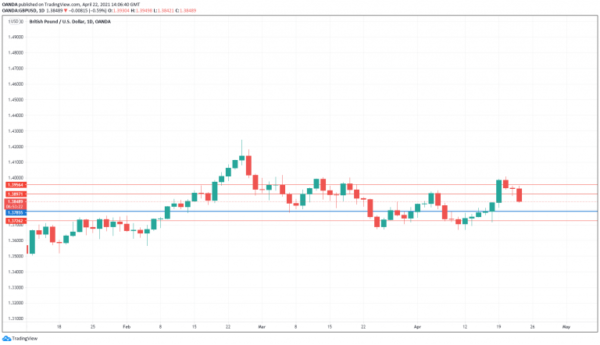The British pound is sharply lower on Thursday. Currently, GDP/USD is trading at 1.3832, down 0.70% on the day.
Pound falls as manufacturing expectations slide
The pound was red-hot at the start of the week, posting gains of 1.1% on Monday. The pound managed to punch across the symbolic 1.40 line for the time in five weeks, but couldn’t consolidate at these levels. The currency has since retreated and fallen into 1.38-territory.
The driver behind today’s considerable losses was CBI Industrial Trends Orders, which measures the expectations of UK manufacturing executives. The indicator sagged badly in April, coming in at -8 points. The consensus stood at +2, as analysts were projecting the first gain since March 2019.
Despite the dismal reading, UK manufacturing has been a bright spot in the economy. The Manufacturing PMI for March improved to 58.9, and the PMI has been above the 50-level, which indicates growth, since June 2020.
Will retail sales lift the pound?
UK retail sales are the primary gauge of consumer spending and should be treated as a market-mover. The consensus for the March read stands at 1.5%. If the release is within expectations, it would mark back-to-back gains in retail sales. The year started on a sour note, as retail sales for January took a nasty dive with a decline of 8.2%. A solid gain in March would indicate that consumer spending is strengthening as the economy is reopening. That could improve sentiment towards the pound.
The government has been easing health restrictions as Covid rates have been dropping, and that has been good news for the services industry. In March, Services PMI showed growth for the first time in five months, rising to 56.3, up from 49.7. The upswing is expected to continue in April, with a forecast of 58.9 points.
GBP/USD Technical Analysis
- GBP/USD faces resistance at 1.3898, followed by resistance at 1.3956
- There is a pivot point at 1.3784. Below, there is support at 1.3726












